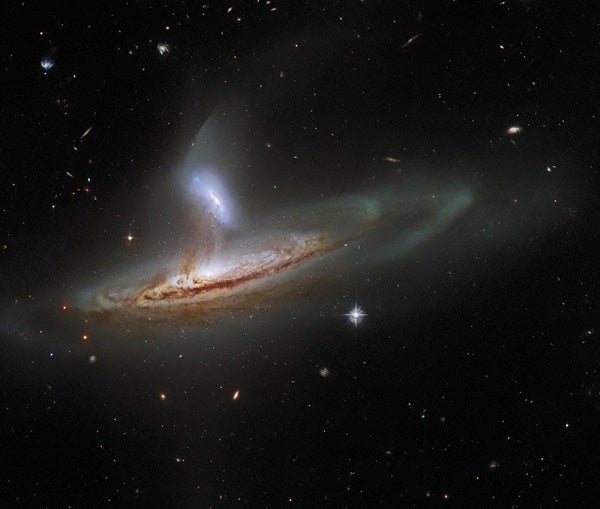Over the past 30 years, the Hubble Space Telescope has helped transform our understanding of the universe. And all the while, it’s also steadily quenched the public’s thirst for stunning views of nebulae and galaxies spread throughout the cosmos.
Known as Arp 282 and located some 300 million light-years away, the galactic duo pictured above, and captured by Hubble, reveals the galaxy NGC 169 (bottom) visibly interacting with the galaxy IC 1559 (top). In the shot, you can see wisps of gas and dust delicately linking the two galaxies, a result of the immense tidal forces involved when two gravitational goliaths stray too close.
Although galaxies may often appear isolated, with no nearby neighbors in sight, that doesn’t mean they always will be. And partly thanks to Hubble images like this, astronomers now know that glancing interactions and head-on collisions between galaxies are quite common (even if such collisions rarely result in individual smash-ups between stars). In fact, close encounters like this play a fundamental role in how galaxies evolve in size, shape, and structure over billions of years. Furthermore, when two galaxies interact, it can even stir up the gas and dust within them, kick-starting fresh bursts of star formation.
So, although galactic collisions, at first blush, may seem like cosmic calamities, over the long run, they might actually breathe fresh life into otherwise dimming, dying island universes.










